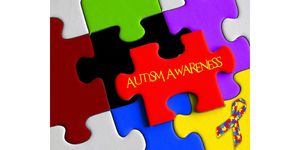A Reminder From the CDC About Respiratory Syncytial Virus
This winter, the Centers for Disease Control and Prevention (CDC) is reminding people about the respiratory syncytial virus (RSV). It’s a common illness which can strike people of any age. According to the Mayo Clinic, most people have experienced an RSV infection by age two. While it’s usually a mild problem that is similar to a cold, it can be dangerous for some individuals. Those with weakened immune systems, premature babies and infants, elderly adults or those with a heart or lung condition might have a more severe case of illness. The video features a brief explanation of RSV.
RSV tends to cause nasal congestion or a runny nose, sore throat, dry cough, low fever, and a mild headache. Most people get over their infection within a couple of weeks. In more serious infections, however, the fever and cough get worse and can be accompanied by breathing difficulties and wheezing. A bluish tint may appear in the skin as the body is deprived of oxygen.
The virus usually strikes infants hardest. The CDC notes that “RSV is the most common cause of bronchiolitis (inflammation of the small airways in the lung) and pneumonia (infection of the lungs) in children younger than one year of age in the United States.”
RSV spreads easily and can move through the air. It can infect the body through the eyes, nose, and mouth. While direct contact with an infected person can transmit the virus, you only have to be near the cough or sneeze of an infected person to be exposed. The pathogen can also live for several hours on surfaces like toys, doorknobs or counters. Infected individuals are most contagious in the first few days after the infection occurs.
There are no treatments for RSV, only the symptoms, and no vaccine is available. Prevention is key. The CDC recommends that people that are sick should stay at home. People can also reduce the chances of infection by washing their hands frequently, keeping surfaces disinfected, learning the ‘vampire sneeze’ or using tissues, and avoiding touching one’s face. Infants that are exposed to tobacco smoke tend to have a higher risk of infection and more severe cases of illness as well.
Check out the ABC News video below to get a demo of the vampire sneeze, and an explanation for why it’s a good technique to use when one sneezes.
Sources: Mayo Clinic, CDC








